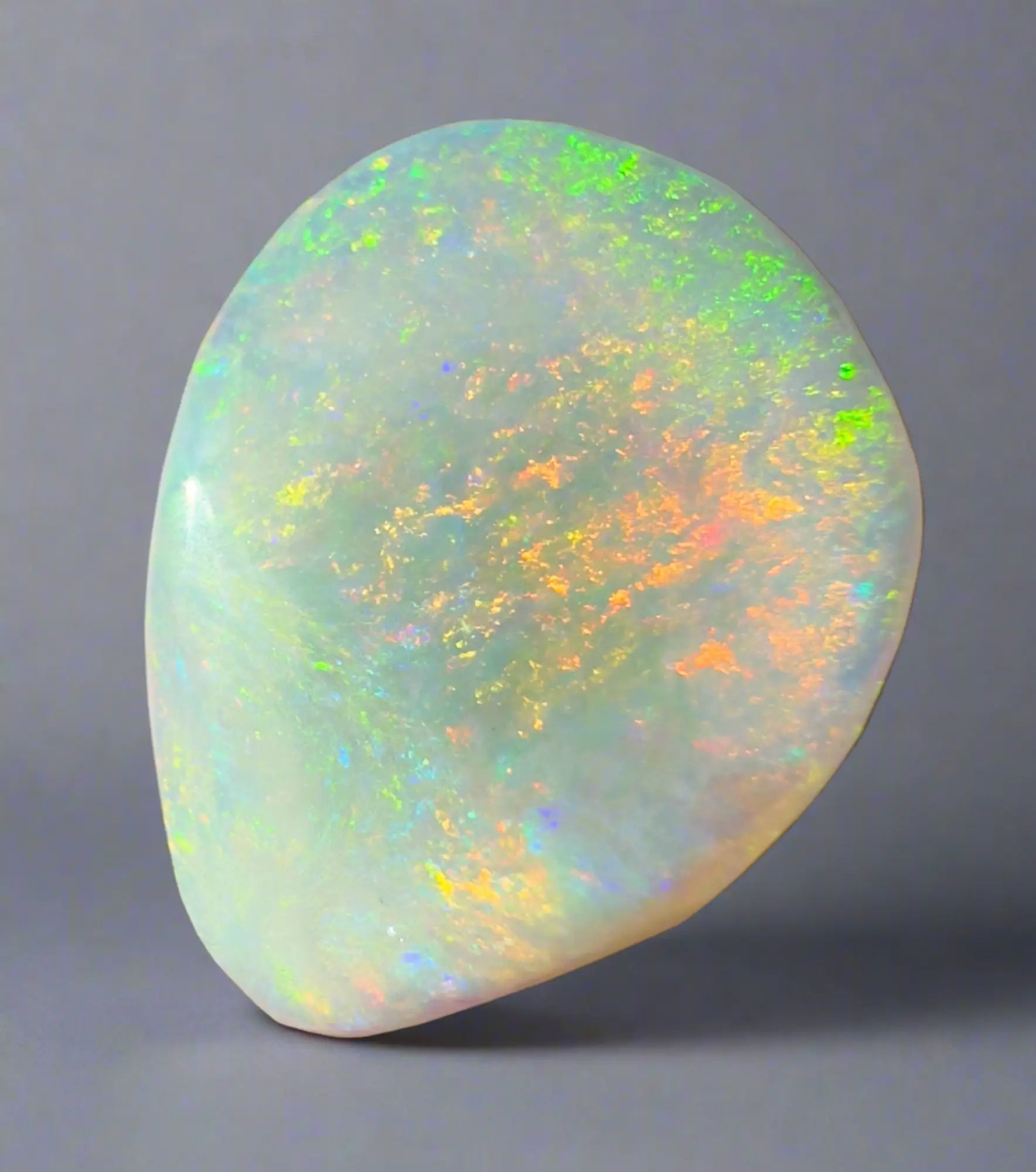
Famous Australian Mintabie Opal: A Radiant Australian Gem
Mintabie opal is considered some of the most distinctive opal found in Australia. The mines in Mintabie produced white, crystal, and the coveted black opal, known for its unique layering of colour bars. This makes picture stones that are often sliced across the layers rather than along them.
Location and History
Mintabie is located in the Anangu Pitjantjatjara Yankunytjatjara lands in South Australia. This area had been leased to the South Australian government for opal mining since the 1980s. Some say the name Mintabie is derived from the Aboriginal words meaning 'Kangaroo'.
Indigenous Australians were the first to discover opals in Mintabie and traded black opals at Coober Pedy during the First World War. However, harsh conditions and a lack of water discouraged extensive mining until the mid-1970s. With the introduction of explosives and large machinery in 1976, non-Indigenous miners began to work the area, leading to the establishment of a small township.
Mining and Geology
Mintabie’s opal fields are unique because they are located on freehold Aboriginal land, making it distinct among Australian opal fields. The geology of Mintabie opals is different from other regions; the host rock is Ordovician, much older than the Cretaceous rock found in other Australian opal fields. This makes mining and cutting Mintabie opals more challenging. Miners often use heavy machinery and explosives to extract the opals, which can withstand more pressure and stress compared to other types of Australian opals.
The potential closure of Mintabie was been an issue since the 1980s. In February 2018, the South Australian government announced it would not renew any leases in the town, leading to the compulsory closure of Mintabie in 2019. Despite this, some limited mining is still allowed, although the town's remoteness makes operations difficult.
Unique Characteristics of Mintabie Opal
Mintabie opals are renowned for their crystal opals, which display unique contrasts between fire and colour. This area was once the largest opal producer by value in the 1980s, even surpassing Lightning Ridge.
Mintabie opals are found in the Lower Cretaceous bed along the edge of the Great Artesian Basin. They come in a wide range of colours, from nearly black to opaque white and everything in between. These opals are typically of high quality but can be difficult to mine and cut due to their geological characteristics.
Cutting Mintabie Opal
Cutting Mintabie opals is more challenging compared to other opals because of their strong host rock. The toughness of the opal is excellent for preservation but makes cutting more difficult. When colour bars are tightly packed, it can be nearly impossible to cut a stone rich in colour, although they are ideal for creating picture stones, which have become popular in recent years.
Cultural Significance
Opal is considered a lucky gem by many cultures, including the Indigenous Australians of the Anangu Pitjantjatjara Yankunytjatjara lands. They believe that opals are the creator's footprints, touching the earth at the base of rainbows to bring harmony to the people.
At Iona Opal, we cherish each opal's unique story. Shop our exquisite range of opals at Iona Opal.




Leave a comment
This site is protected by hCaptcha and the hCaptcha Privacy Policy and Terms of Service apply.